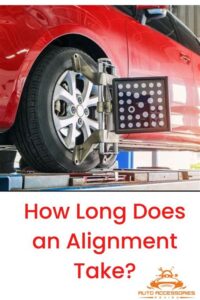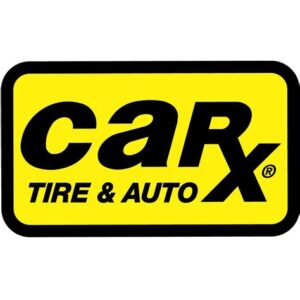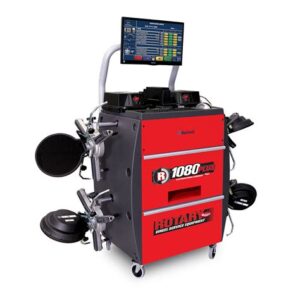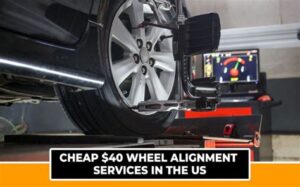Learn about car alignment, its importance, signs of misalignment, factors affecting frequency, and expert recommendations for maintaining optimal vehicle performance.When it comes to maintaining your vehicle, understanding the importance of proper car alignment is crucial for both safety and performance. Alignment refers to the adjustment of your car’s suspension system, ensuring that the wheels are positioned correctly relative to each other and the road. However, many drivers often overlook this key aspect until noticeable problems arise. In this blog post, we’ll explore the various factors that impact how often your car needs alignment, shed light on the signs indicating misalignment, and highlight the benefits of keeping your alignment in check. Additionally, we’ll provide recommendations on how frequently you should consider aligning your car to ensure a smooth and safe driving experience. Buckle up as we navigate through the essentials of car alignment!
Understanding Car Alignment
Car alignment refers to the adjustment of a vehicle’s wheels so that they are positioned correctly relative to each other and to the road. Proper alignment ensures optimal tire tread wear, improved fuel efficiency, and enhanced handling. When your car’s wheels are aligned, it means that they are parallel to each other and perpendicular to the road surface, which is essential for a smooth driving experience.
Several factors can contribute to misalignment, including hitting potholes, curbs, or road debris. Even wear and tear over time can affect alignment. It’s important to understand that misalignment can lead to a variety of problems, including uneven tire wear and difficulty steering. This knowledge can equip car owners with vital information to maintain their vehicles effectively.
In general, it is recommended to have your car’s alignment checked at least once a year or whenever you notice any changes in handling or tire condition. Regular checks can save you money in the long run by preventing more serious issues that arise from poor alignment. Keeping abreast of these guidelines will help ensure that your vehicle remains safe and rides smoothly.
Factors Affecting Alignment Frequency
When it comes to maintaining your vehicle, understanding the factors affecting alignment frequency is essential. Proper alignment ensures that your car drives straight and handles well, but various elements can influence how often you need to get your alignment checked.
Here are some key factors that can affect your car alignment and how frequently it should be checked:
- Driving Conditions: Frequent driving on rough or uneven roads can cause misalignment more quickly than regular driving on smooth highways.
- Tire Wear: Uneven or excessive tire wear can indicate alignment issues, prompting a need for realignment sooner than later.
- Vehicle Usage: If you often carry heavy loads or tow trailers, the added weight can place stress on your vehicle’s alignment.
- Accidents: Any kind of impact, whether minor or severe, can affect your alignment and may require immediate attention.
- Seasonal Changes: Changes in temperature and road conditions can affect tire pressure and alignment; thus, periodic checks are advisable.
Understanding these factors can help you maintain optimal car alignment and prolong the life of your tires and suspension system. By being proactive, you can save on potential repairs in the long run.
It’s wise to consult your owner’s manual or a professional for specific recommendations on how of
Signs of Misaligned Car
Proper car alignment is key to achieving optimal vehicle performance. When your car is misaligned, it can lead to several noticeable symptoms. Understanding these signs can help you address the problem before it escalates into more serious issues.
Here are some common signs of a misaligned car:
- Uneven Tire Wear: If you notice that your tires are wearing unevenly, it often indicates that the alignment is off. Certain edges may show more wear than others.
- Pulling to One Side: When driving straight, if your car tends to drift to the left or right, it’s a strong indicator that your alignment needs adjustment.
- Steering Wheel Off-Center: If your steering wheel is not centered when driving straight, it’s often a clear signal that the alignment is incorrect.
- Vibration in the Steering Wheel: A vibrating steering wheel can be another sign that your car’s alignment is off, leading to an unstable driving experience.
Addressing these signs promptly can enhance your driving safety and prolong the life of your tires. If you experience any of these symptoms, it’s advisable to visit a trusted mechanic for a thorough alignment check.
Benefits of Regular Alignment
Proper car alignment is crucial for maintaining the overall health of your vehicle. When your tires are properly aligned, they wear evenly, which can lead to a longer lifespan of the tires. This helps you avoid the expense of early tire replacement, making regular alignment not only a maintenance necessity but also a smart financial decision.
Another significant benefit of regular alignment is improved fuel efficiency. Misaligned wheels can cause your car to drag, which forces the engine to work harder to move your vehicle. By ensuring that your wheels are aligned correctly, you can improve your car’s mileage, saving you money on fuel in the long run.
Additionally, regular car alignment enhances the safety of driving. Misaligned wheels can negatively impact the handling of your vehicle, making it harder to steer and stabilize. By routinely checking and adjusting your alignment, you can significantly reduce the risk of accidents caused by misregulation and improve the overall driving experience.
| Benefits of Regular Alignment |
|---|
| Even tire wear |
| Improved fuel efficiency |
| Better vehicle handling |
| Increased safety while driving |
Recommendations for Alignment Frequency
When it comes to maintaining your vehicle, understanding how often your car needs alignment is crucial for safety and performance. In general, it is advised to check your car’s alignment every 6,000 miles or at least once a year. This recommendation ensures that your tires wear evenly and that your car handles properly.
However, specific driving conditions can necessitate more frequent checks. For instance, if you frequently drive on rough roads, experience severe weather, or regularly carry heavy loads, you should consider getting your alignment checked every 3,000 to 5,000 miles. Additionally, if you notice that your car is pulling to one side or you encounter uneven tire wear, it’s wise to have an alignment service performed immediately.
To keep your alignment in check, regularly inspect your tires for any signs of wear and tear, and pay attention to the steering wheel. If it feels off-center or your vehicle appears to drift while driving straight, these can be signs that it’s time for an alignment. Following these recommendations can help extend the life of your tires and enhance your driving experience.
Frequently Asked Questions
What is wheel alignment?
Wheel alignment refers to the adjustment of a vehicle’s suspension system, ensuring wheels are positioned at the correct angles for optimal handling and tire wear.
How often should I check my car’s alignment?
It’s recommended to check your car’s alignment at least once a year or whenever you notice signs of misalignment such as uneven tire wear or your vehicle pulling to one side.
What are the signs that my car needs alignment?
Common signs include uneven tire wear, steering wheel vibration, vehicle pulling to one side, and the steering wheel being off-center when driving straight.
Can hitting a pothole affect alignment?
Yes, hitting a pothole or curb can cause your vehicle’s alignment to go off, and it’s advisable to have it checked after such incidents.
Does performing regular maintenance affect alignment?
Yes, regular maintenance like tire rotation and suspension checks can help maintain alignment and improve your vehicle’s overall performance.
How much does a wheel alignment cost?
The cost of a wheel alignment can vary widely, typically ranging from $50 to $100, depending on the service provider and your vehicle type.
Is it necessary to have a professional align my car?
Yes, it is advisable to have a professional align your car to ensure the adjustments are precise and to preserve the integrity of your vehicle’s suspension system.





